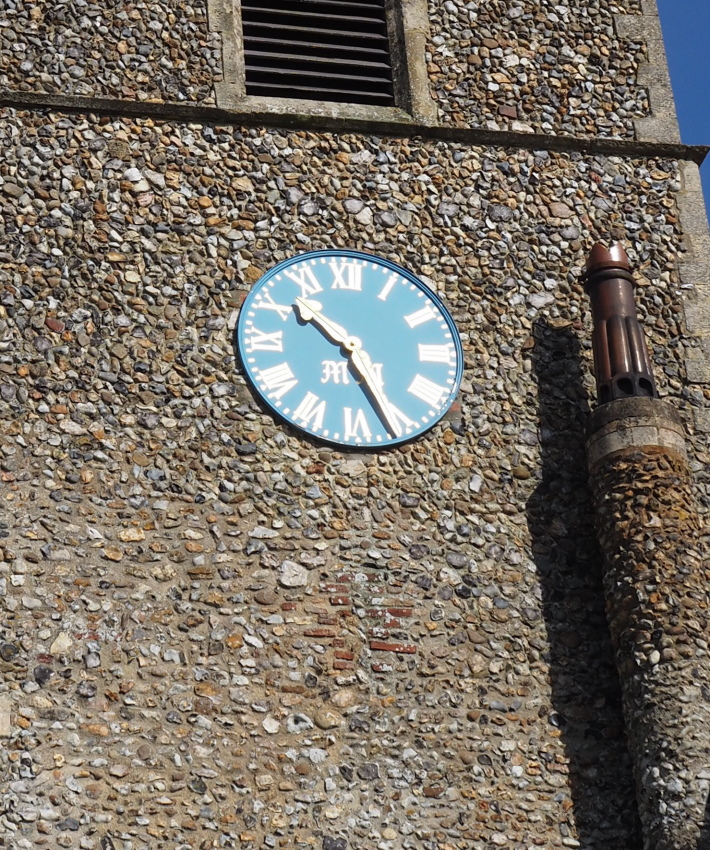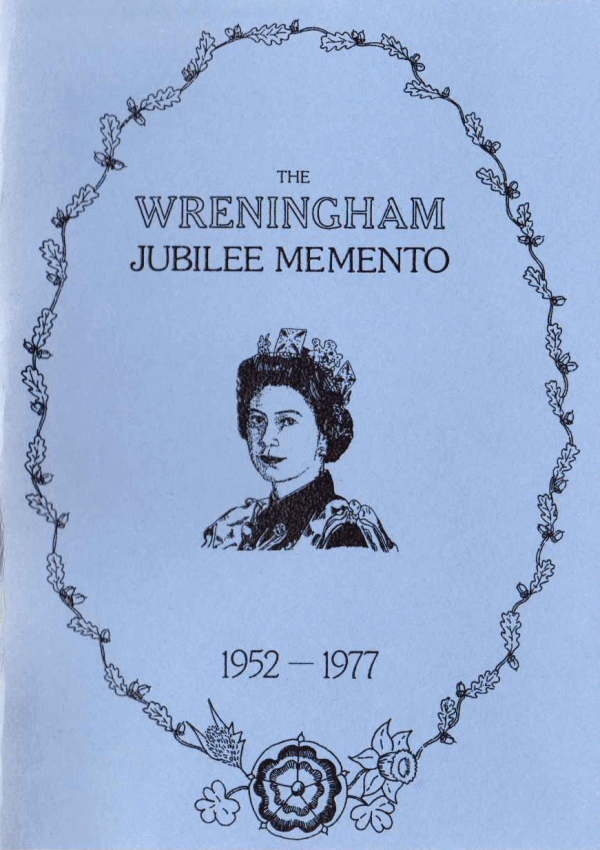
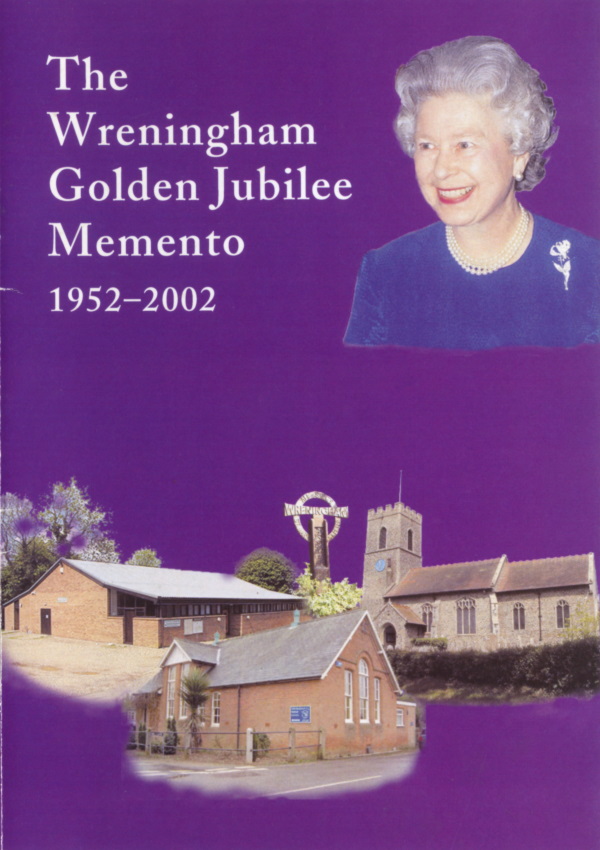
Queen Elizabeth II Silver Jubilee – 1977
In October 1976 a parish meeting was convened at the village hall to plan the forthcoming Silver Jubilee of Queen Elizabeth II. Whilst considering the form of village’s Silver Jubilee, the committee realised they could use the Victorian Jubilee event as a template for 1977. That’s exactly what they did.
It would be wonderful to think that one meeting would fix everything! In fact, there was another meeting on the 3rd November followed by 8 further meetings before the first event got underway on the 6th June.
After the partying was over, they printed a “Memento” booklet – this time, taking the 1887 booklet as a model for the 1977 version. A shortened version of the 1977 booklet is available here.
During the original October 1976 planning meeting, a second team was convened to create a new village sign. This was to be both designed and made in Wreningham. It was to be fashioned from English Oak and paid for by donation.
The place name carved in the wooden circle are those of the three original village churches: All Saints (today’s church) plus St Mary and St Peter. The last two disappeared from the local scene many hundreds of years ago.
The sign also has a legend carved into its central panel together with a carved representation. This reads as follows:
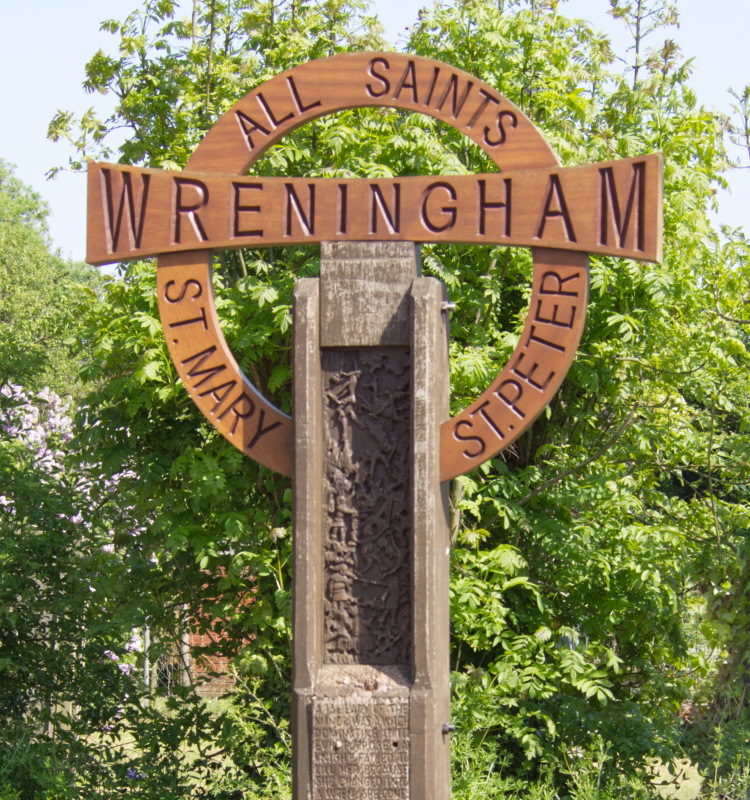
“A 13th Century Lady of the Manor was a witch dominating it to evil purpose. A knight failed to kill her because she changed into a wren. She comes back every St Stephens Day and is hunted by the villagers who beat the hedges with sticks and carry the dead wren in triumph.”
The Silver Jubilee celebrations included a fancy dress event at the village hall.
Event judges, Henley Curl (pictured left) and Mrs Folwell (second from right) had the greatest difficulty in arriving at a winner but, in the end selected the Minns family.
The budget for the 1977 celebration was just over £273 and, unlike the Victorian event, no money was left over!
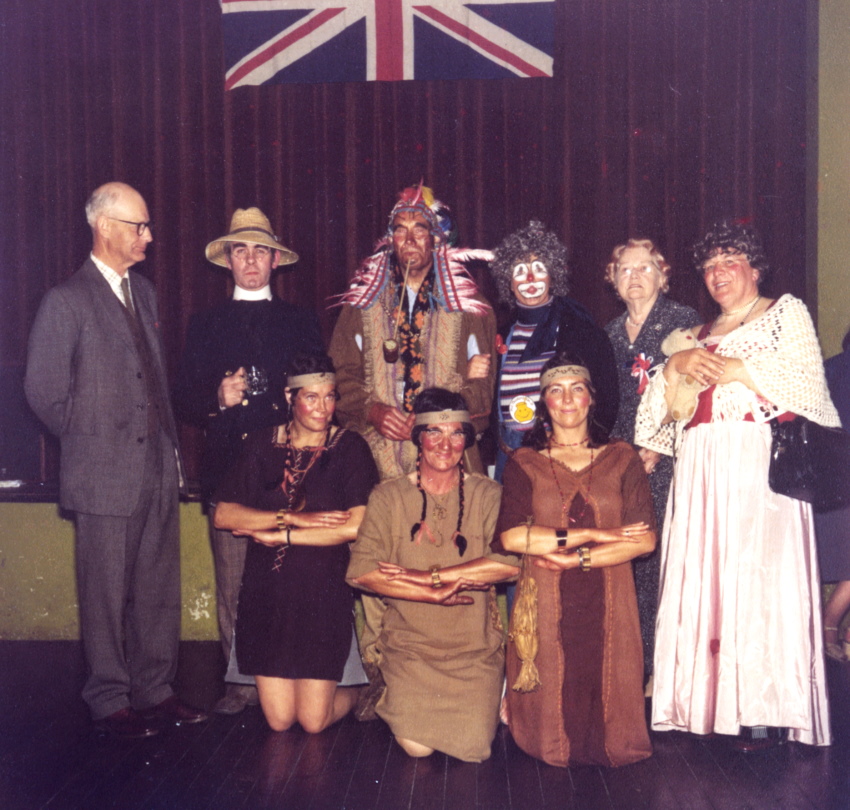
Queen Elizabeth II Golden Jubilee – 2002
The 2002 celebration was a lower key event. The village had just funded and completed the installation of a church clock for the Millennium. Many had been forewarning chaos from the “millennium bug”; whilst predicted to devastate global computing networks, there was little effect and most things went smoothly. It was probably with relief that Wreningham had limited its Golden Jubilee celebrations to more traditional pursuits. In due course, a jubilee booklet was produced and a shortened version is available here.
The day started with a morning ramble and a push-chair friendly treasure hunt. This was followed by ploughman lunches being served in the village hall. A Best Dressed Cycle competition was open to all – followed by rounders on the playing field and a Boys v Dads football match. Afternoon teas were served in the hall and, if anyone was still up for it, an evening barbecue had music and drink on tap.
A couple of years before, the Millennium clock project was intended to match the scope of the Village Sign project from the 1977 Silver Jubilee. A clock face was provided on two sides of the church tower.
The parish council had kicked off the funding appeal with a £1,000 contribution. As it turned out, the people of the village were so generous, the parish council put its hand back in its pocket and elected to pay for ongoing maintenance, instead!
